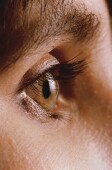
MONDAY, Feb. 11 (HealthDay News) — Scientists who identified 24 new genes linked to nearsightedness say their discovery could lead to improved treatments or ways to prevent the condition.
Nearsightedness (myopia) is a major cause of visual impairment and blindness worldwide. Thirty percent of people in Western nations and up to 80 percent of Asians have this problem (also called shortsightedness). The condition can be corrected with eyeglasses, contact lenses or surgery, but there is no known cure.
In this study, an international team of researchers analyzed genetic data from more than 45,000 people in 32 studies. They pinpointed 24 new genes associated with nearsightedness and confirmed two other genes linked with the condition.
The newly identified genes include those involved in brain and eye-tissue signaling, eye structure and eye development. The genes are associated with a high risk of nearsightedness and people with the high-risk genes have a 10-fold increased risk of having the condition.
The study was published Feb. 10 in the journal Nature Genetics.
“We already knew that myopia tends to run in families, but until now we knew little about the genetic causes,” study lead author Chris Hammond, a professor at King’s College London, in England, said in a college news release. “This study reveals for the first time a group of new genes that are associated with myopia and that carriers of some of these genes have a 10-fold increased risk of developing the condition.”
“Currently, myopia is corrected with glasses or contact lenses, but now that we understand more about the genetic triggers for the condition we can begin to explore other ways to correct it or prevent progression,” he said. “It is an extremely exciting step forward which could potentially lead to better treatments or prevention in the future for millions around the world.”
Other known risk factors for nearsightedness include reading, lack of outdoor exposure and a higher level of education, according to the news release. The condition is more common in people who live in cities.
More information
The U.S. National Eye Institute has more about nearsightedness.

